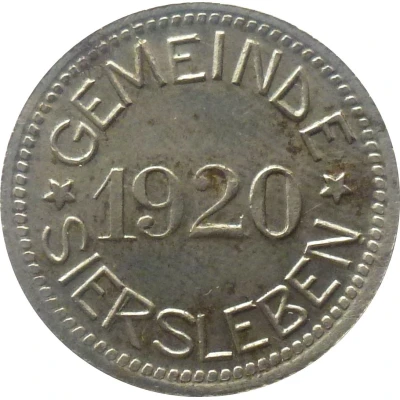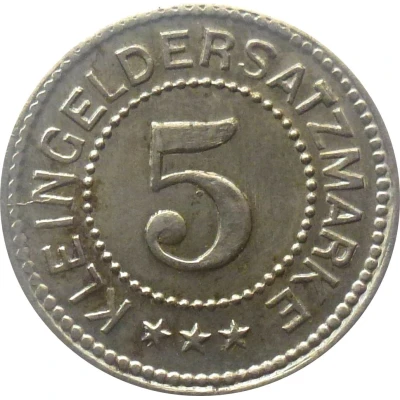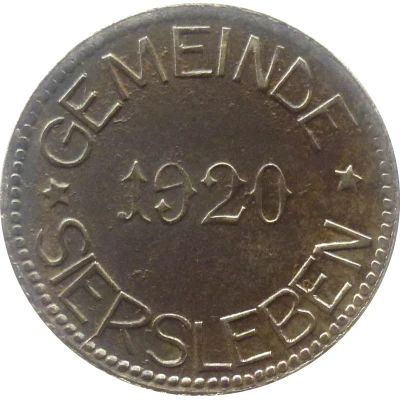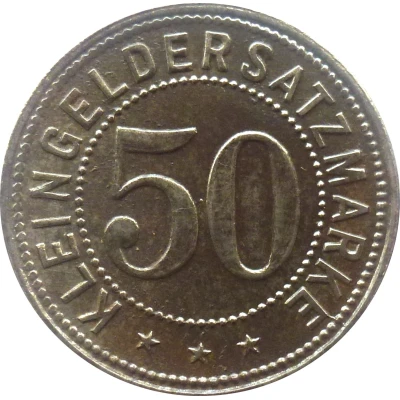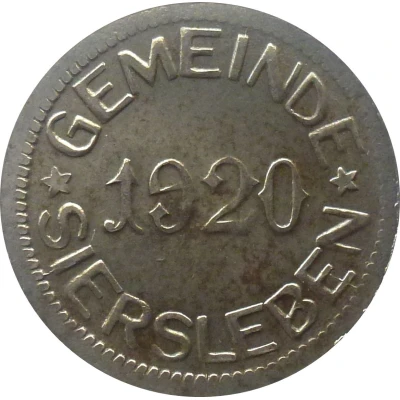
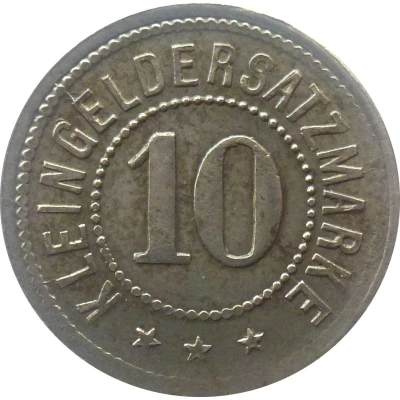

© Willem63 (CC BY-NC-SA)
10 Pfennigs - Siersleben
1920 year| Iron | 2.5 g | 20.0 mm |
| Issuer | Municipality of Siersleben (Prussian province of Saxony) |
|---|---|
| Period | Weimar Republic (1918-1933) |
| Type | Standard circulation coin |
| Year | 1920 |
| Value | 10 Pfennigs (10 Pfennige) (0.10) |
| Currency | Mark (1914-1924) |
| Composition | Iron |
| Weight | 2.5 g |
| Diameter | 20.0 mm |
| Thickness | 1.1 mm |
| Shape | Round |
| Technique | Milled |
| Orientation | Medal alignment ↑↑ |
| Demonetized | Yes |
| Updated | 2024-10-04 |
| Numista | N#353416 |
|---|---|
| Rarity index | 93% |
Reverse
Pearl rim, legend surrounding pearl circle with denomination centered
Script: Latin
Lettering:
KLEINGELDERSATZMARKE
10
★ ★ ★
Edge
Plain
Interesting fact
One interesting fact about the 10 Pfennigs - Siersleben 1920 coin is that it was issued during a time of hyperinflation in Germany, specifically during the 1920s. This coin, made of iron and weighing 2.5 grams, was a result of the economic crisis that Germany faced after World War I, which led to a significant decrease in the value of the German mark. The coin's low denomination and metal composition were a result of the government's attempt to control inflation and stabilize the economy. Despite its low value, the coin remains a valuable collector's item today, serving as a reminder of Germany's economic history.
